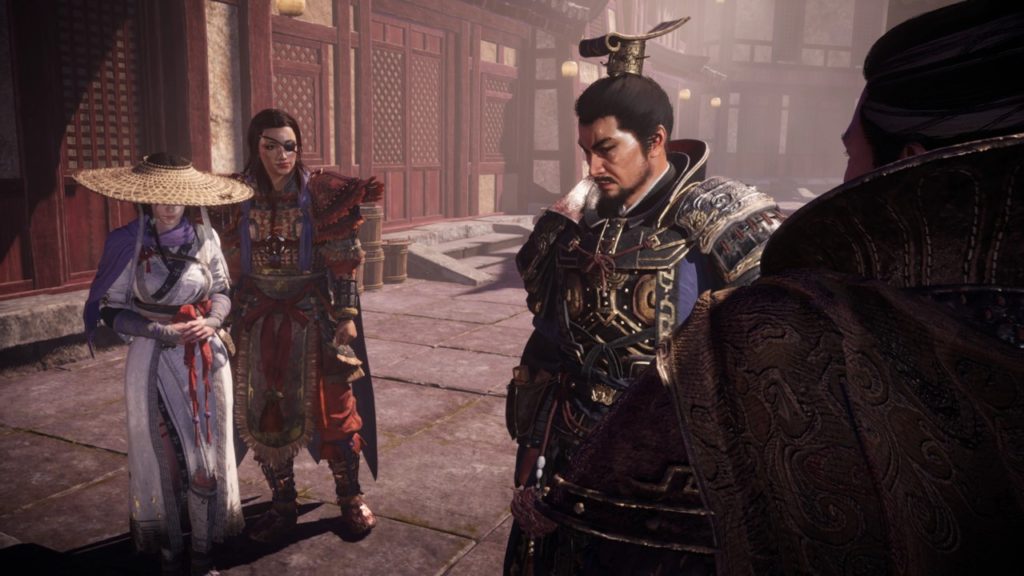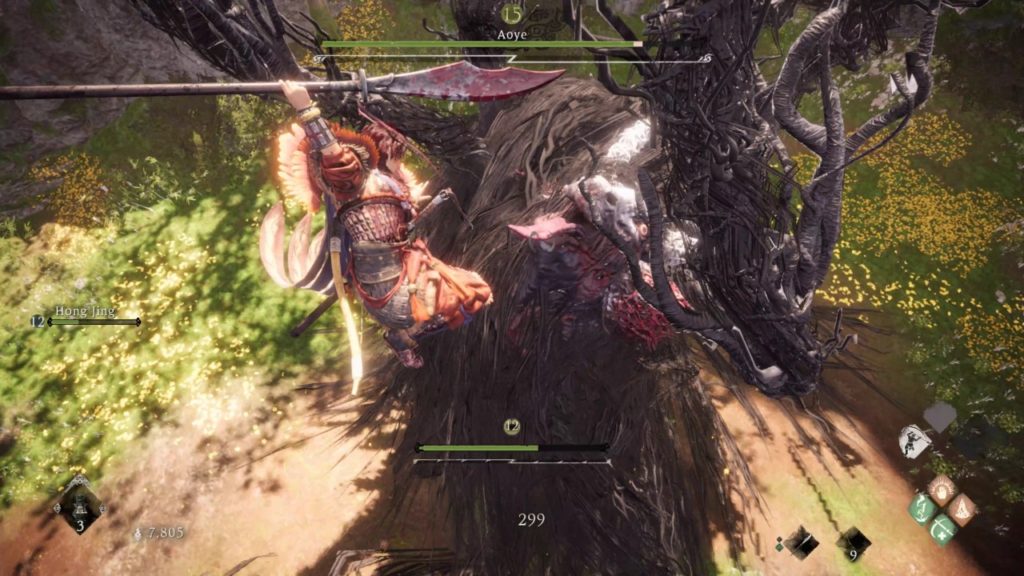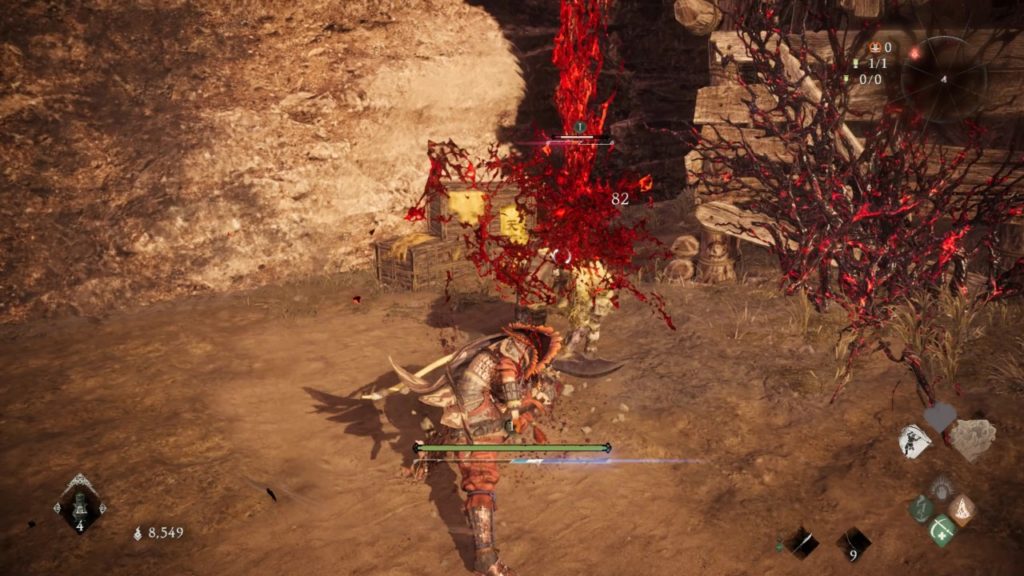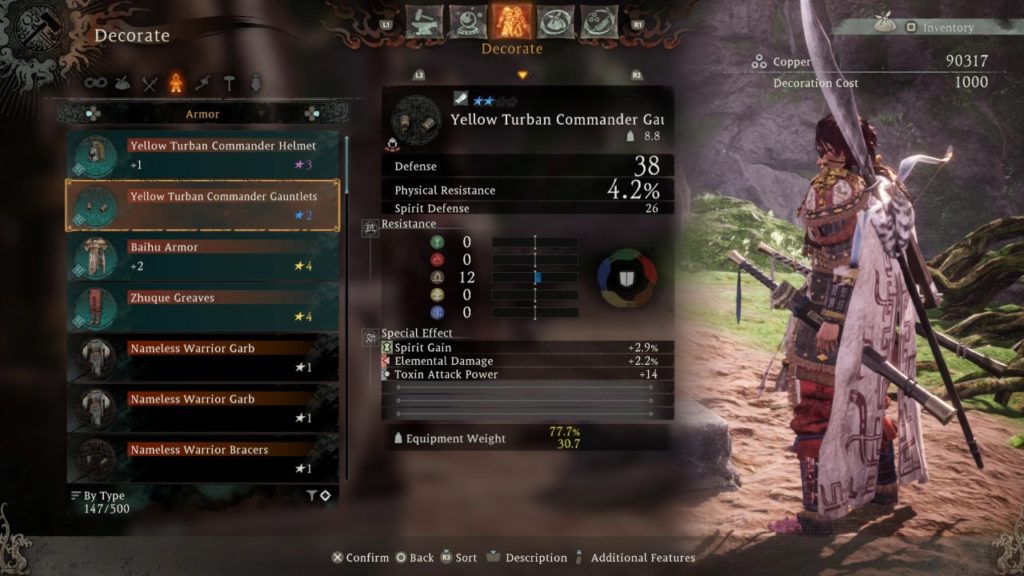Wo Long: Fallen Dynasty review
Romance of the Three Kingdoms is a 500-year-old, 800,000-word epic novel detailing the fall of the Chinese Han Dynasty. It has been translated into multiple languages, adapted into movies, graphic novels, plays, and, notably, video games, with Omega Force’s Dynasty Warriors franchise cribbing heavily from the historical tome – albeit with a little extra nonsense thrown in. Now Koei Tecmo, publishers of Dynasty Warriors, have teamed up once again with Team Ninja to bring us a new version of the saga in Wo Long: Fallen Dynasty.
Like Nioh and its sequel, Wo Long is set in a fantastical version of its origin country, in this case China instead of Japan. Here, legendary warlords like Dong Zhou, Cao Cao and Lu Bu are depicted battling with the aid of ancient magic, terrifying demons, and powerful armies. And rather than it being a war just for power or rule, the subject of most of the conflict is an eldritch Elixir that can grant power over life, death and the elements.
Your character is a nameless soldier thrust into the centre of a countrywide conflict, which sees you travelling the land to face down armies of demons, monsters, men, and beasts, led by monstrous bosses and evil sorcerers. Anyone familiar with Nioh will likely feel comfortable with Wo Long’s art style and movement, but the game does its level best to make you regret such assumptions pretty quickly.

For a start, this is a lot more reliant on parrying than Nioh was, and a strong offence will only carry you so far. Enemies can interrupt your combos with fatal blows that you must parry or risk taking massive damage, but even that’s only scratching the toenail of the colossus that is Wo Long: Fallen Dynasty’s combat system. This is a title that heaps mechanics on mechanics in the early game, forcing you to adapt and integrate each element into your repertoire to survive.
For example, not only are there multiple weapon archetypes, but they also come with dozens of different stats, buffs and debuffs attached that you’ll need to study when creating your build. Then there’s armour, with seperate stats for physical protection, defence, elemental defence… You can use ranged weapons, bombs, special moves, summon Divine Beasts, and employ wizardry to help you overcome your foes. Combat takes a long time to feel comfortable with, as even the Block and Parry commands are on separate buttons. It’s a game that requires absolute concentration and an acceptance that to succeed, you will first need to fail.
Enemies come at you in numbers, and they move fast. They have different wind-ups and tells, and varying attack delays to throw you off-balance when attempting a parry. Even putting some distance between you and them can be hard because so many of them are incredibly aggressive, forcing you to block and parry in quick succession which, admittedly, looks great in motion.

To compensate for this, Wo Long: Fallen Dynasty employs a unique stamina management system. You have a Spirit guage at the foot of the screen that remains in a neutral position outside of combat. Once you engage, you must attempt to keep the guage in the blue, as you will use it to cast wizardry spells, dodge, parry, and attack. The further it slides into orange, the less you’ll be able to perform those actions, which can render you utterly defenceless if you become staggered. Each fight, whether with a single enemy or a boss, becomes a dance, as you attempt to manage your various skills and abilities while balancing your Spirit.
On top of all of this, Wo Long also uses a dynamic difficulty system that allows you to make the game harder or easier – with some important caveats. You can’t simply adjust a slider, you see. Each enemy you face has a Morale Rank, which determines their willingness to engage you in combat. If your Morale is higher than theirs, you’ll do more damage and take less – a system that also applies to bosses. You raise Morale by defeating enemies and parrying attacks, or by finding and planting Fortitude flags around the mission area. Your Morale Rank cannot drop below the Fortitude level of the mission area, although death will reset it to that level.
What this means is that you can make all encounters easier by grinding out the level before facing a boss. It’s not a perfect system, as the usual Soulslike boss run after death can stretch to ten or twenty minutes if you really want to give yourself an edge, but it’s a system that allows you to make the game easier for a price. It’s so much more satisfying than a simple difficulty slider, but can be frustrating if you’re repeatedly losing to the same enemy.

Of course, you can summon reinforcements. The multiplayer element allows you to summon other players to either duel or work with to tackle areas up to defeating the boss. Failing that, you can also summon NPC companions. Some are with you due to the story (though you can use an item to send them away outside of cutscenes if you’d rather go it alone), and you can often summon a second NPC helper for tougher fights. They don’t have a huge amount of HP, but are great for taking an enemy’s threat away from you while you heal or regroup. Interestingly, there are even enemies in the game that are able to summon new allies to fight you – including other players. Seeing a named enemy appear and come running towards you is usually scary enough, but to realise there’s a human in control is terrifying.
As with any Soulslike, or Nioh-like, you’ll have a finite number of healing potions (or “Dragon Cure Pots”) between each Battle Flag. It’s at these flags that you level up by spending Genuine Qi (chi) and can buy supplies, change your Divine Beast, or learn Wizardry spells based on which element you’re applying your Qi to. Each element represents a different set of stats and abilities; Water for stealth and Spirit gain, Wood for healing and buffs, for example.
But all of these systems can make Wo Long feel like an incredibly busy, even oppressive experience. While you have the freedom to travel between battlefields (missions) and it will remember your progress in each, even if you’re at the boss door, every mission of a level worth tackling is an uphill task. Clumsy fingers will switch weapons midfight instead of casting a spell (you need to hold RT down for both), and it’s easy to feel overwhelmed when facing more than one enemy. Often your AI allies don’t help, and fights can devolve into a mess of limbs and swords, and you won’t know who’s winning until someone dies.

It throws one of its toughest bosses at you in the first area, and from then on the difficulty is somewhat erratic, with a few late-game bosses feeling like pushovers compared to earlier ones. Even standard enemies vary massively in their level of challenge, making it difficult to find a rhythm at times. The speed of movement doesn’t help some of the platforming sections, either, and the double jump you inexplicably have seems to vary in its reach.
Although, this will certainly vary from player to player. The more you engage with Wo Long’s systems, the more comfortable they’ll become, and the malleable difficulty is a bonus for less skilled players, though it’s worth noiting that it’s not possible everywhere. If there’s a problem with Wo Long, it’s the uneven technical performance. From outright crashes to the framerate plummeting to the low-20s in certain areas, it can really struggle at times. There’s also an issue with texture pop-in. I don’t have the most powerful PC, running with a creaky Ryzen 5 3600X and an RTX 2060 graphics card, but I managed to run it on high settings with a consistent frame outside of specific areas. I also tried it on Steam Deck, where it just isn’t optimised yet.
A central hub allows you to upgrade your gear, which is highly recommended, and explore for secrets, while you can transmogrify your gear for a small cost by visiting the blacksmith. And if one area is too tough, try somewhere else to increase your skills, stats, or gather materials to improve your gear.
Wo Long: Fallen Dynasty offers a more specialised challenge than Nioh 2 did. The reliance on parrying and juggling multiple combat elements is stronger here, and even coming to grips with many of its systems will take some time and effort. But there’s an interesting, epic story running in the background that sees you rubbing shoulders with many legendary heroes and villains, and some great cutscenes to tie it all together. Head into Wo Long: Fallen Dynasty with the right frame of mind to push through its steep challenges, and you’ll find a well-made, enjoyable adventure that simply refuses to pull its punches.




